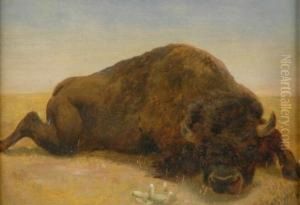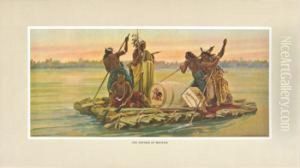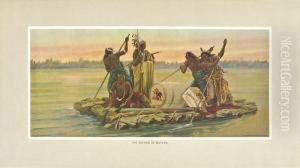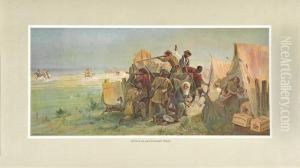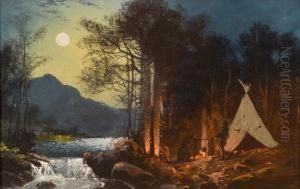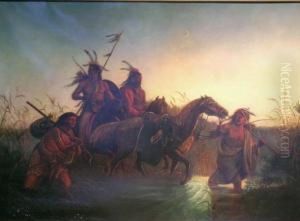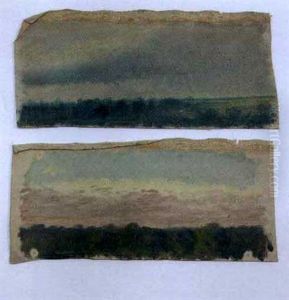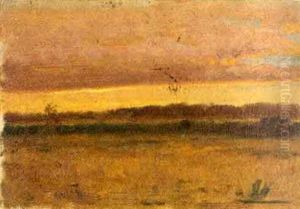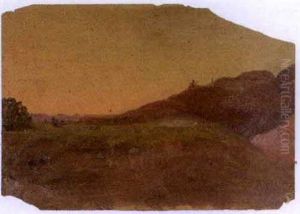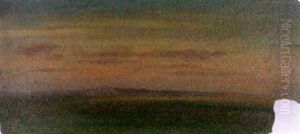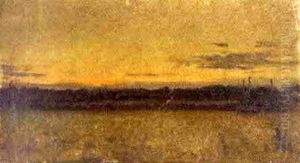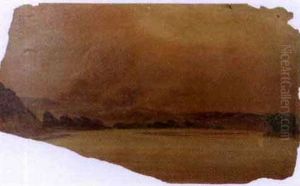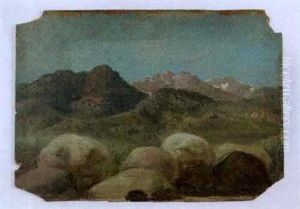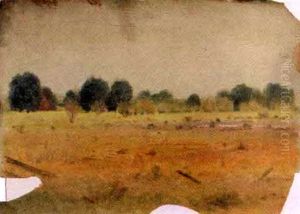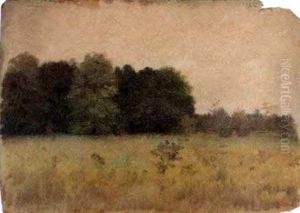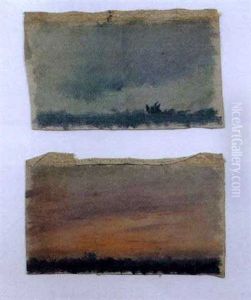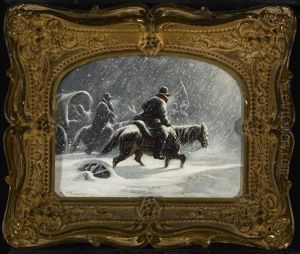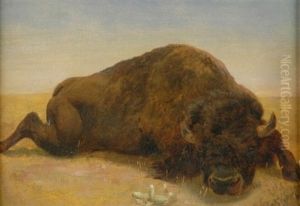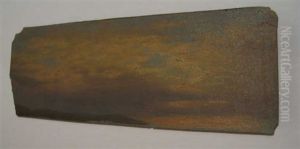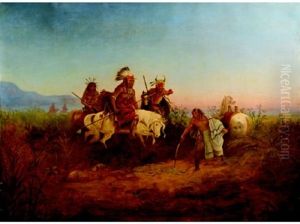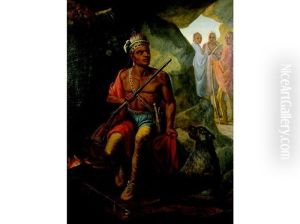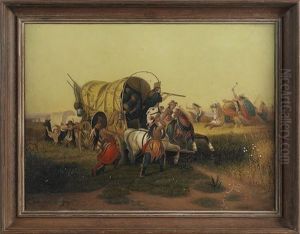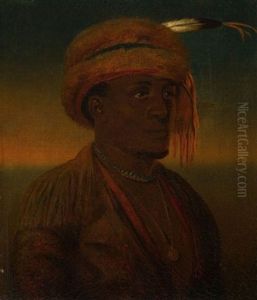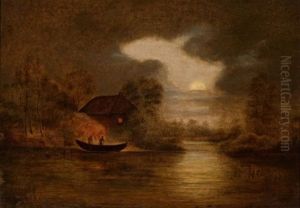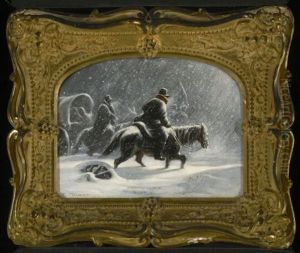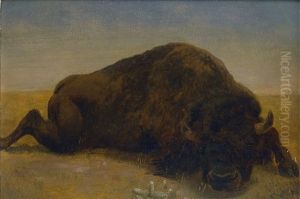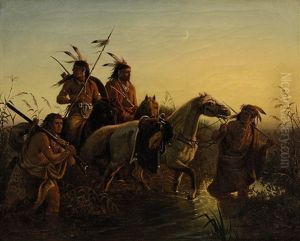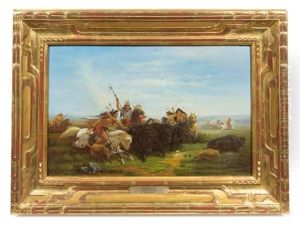Charles Wimar Paintings
Charles Ferdinand Wimar, also known as Carl Wimar, was an artist of German birth who became known for his works depicting the life of Native Americans and the western frontier in the United States. Born on February 20, 1828, in Siegburg, Prussia (now Germany), Wimar emigrated to the United States at the age of fifteen, settling in St. Louis, Missouri. This city, located near the confluence of the Mississippi and Missouri Rivers, served as a gateway to the West and profoundly influenced Wimar's artistic direction. Wimar's fascination with the American West and the indigenous peoples he encountered there became the central themes of his art. He undertook several expeditions into the western territories, including a significant journey along the Oregon Trail in 1858, which provided him with authentic experiences and visuals to infuse into his paintings. His works are characterized by their detailed depiction of Native American life, the dynamic interactions between indigenous peoples and European settlers, and the expansive landscapes of the American frontier. Notable for their historical accuracy and ethnographic detail, Wimar's paintings and sketches are valued not only for their artistic quality but also for their documentary value. Despite his promising career, Charles Wimar's life was cut short by tuberculosis. He died on November 28, 1862, in St. Louis, Missouri, at the young age of 34. By the time of his death, Wimar had become a significant figure in the art world of the American Midwest, particularly within the German-American community. His legacy lives on through his contributions to the genre of Western art, and his works are held in high regard, featured in museums and collections that celebrate the early history of the American West.
